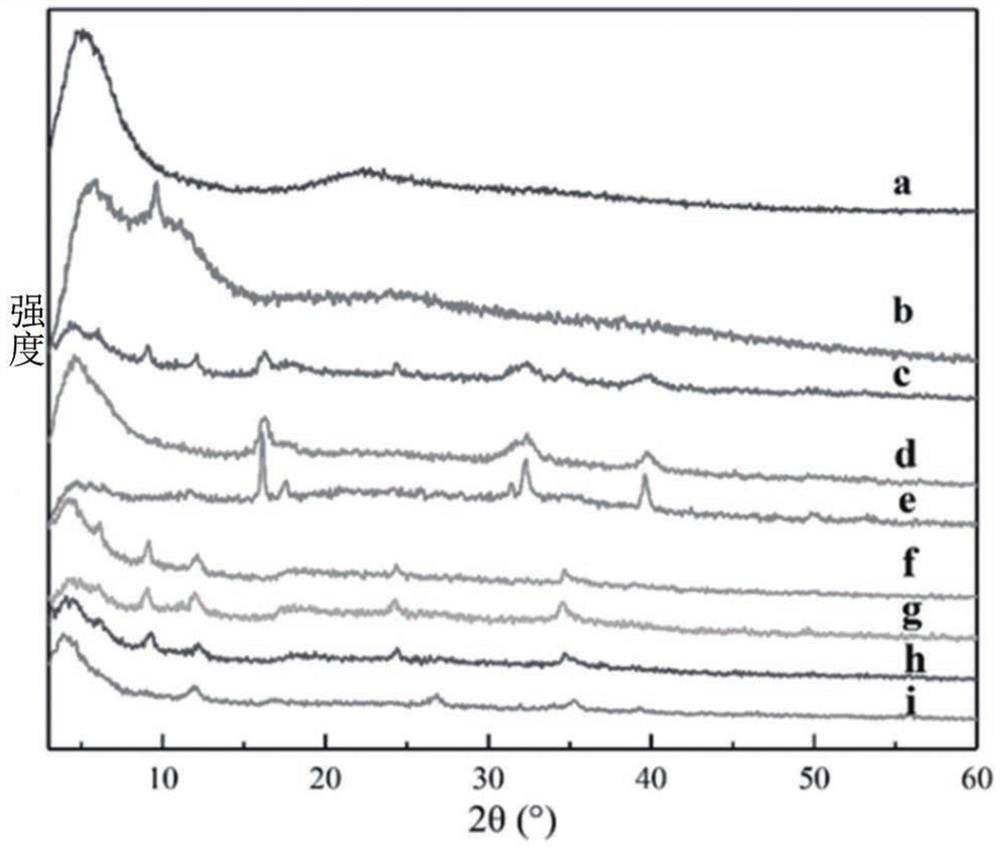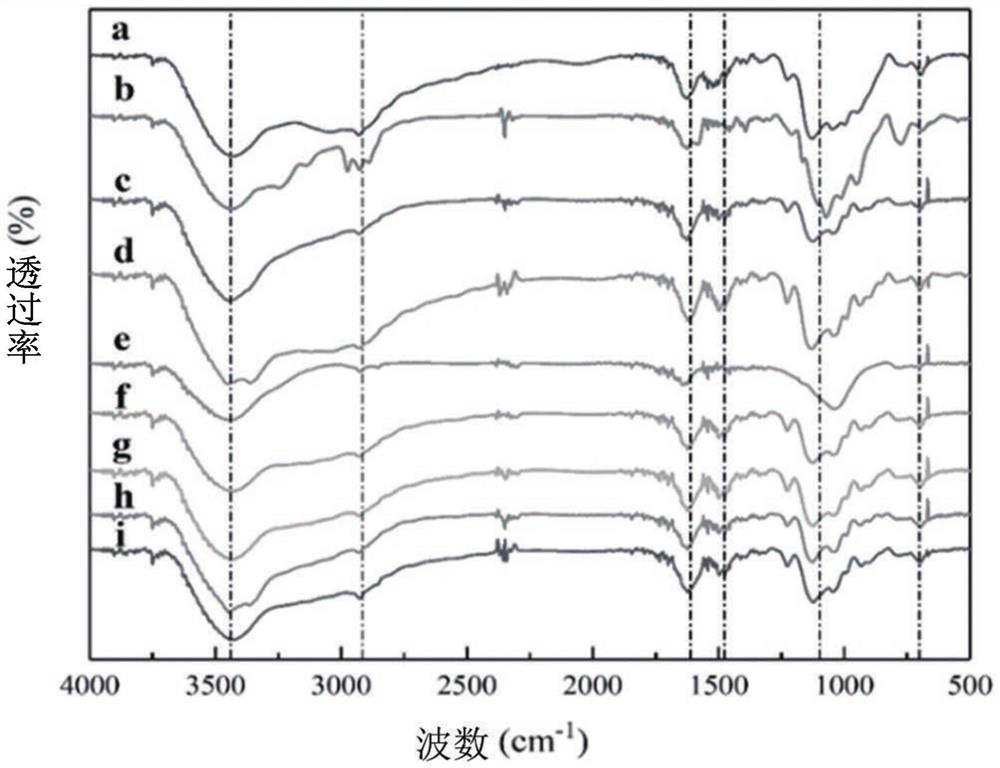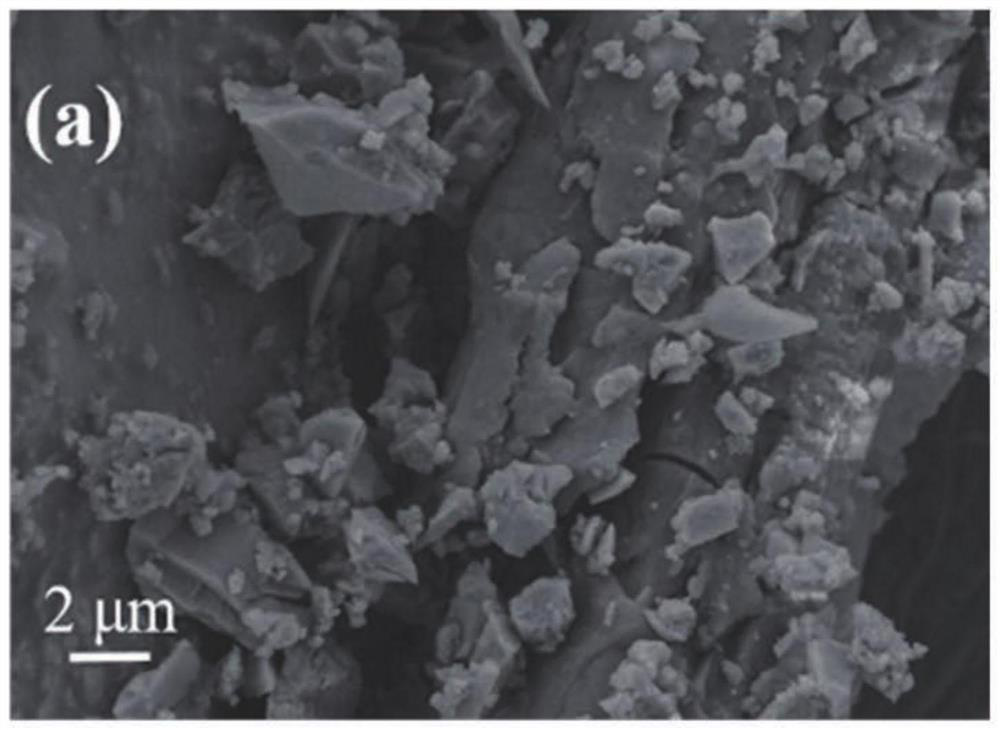Application and evaluation method of catalytic product and organic layered bimetallic silicate
An organic layer and silicate technology, which is applied in the field of layered nano-enzyme material synthesis, can solve problems such as poor dispersion, high temperature and high pressure, and expensive precious metals, and achieve low synthesis energy consumption, low cost, and improved enzyme catalytic activity.
- Summary
- Abstract
- Description
- Claims
- Application Information
AI Technical Summary
Problems solved by technology
Method used
Image
Examples
Embodiment 1
[0082] In this embodiment, Fe is selected as the first transition metal element M, and Cu is selected as the second transition metal element to form [H 2 N(CH 2 ) 3 ] 4 [Si z (Fe x Cu y ) 6 O 8 (OH) 2 ], can be called organic layered iron-copper bimetallic silicate, wherein x:y satisfies 1:(1 / 10~10), and (x+y):z satisfies (1~4):4.
[0083] Specifically, the preparation of the organic layered iron-copper bimetallic silicate of the present embodiment can be achieved by the following methods.
[0084] Prepare FeCl according to the molar ratio of Table 1 3 ·6H 2 O, CuCl 2 ·2H 2 O, 3-aminopropyltriethoxysilane. First of all, Table 1 shows the different proportions of FeCl at room temperature 3 ·6H 2 O and CuCl 2 ·2H 2 Add O into ethanol to dissolve, ultrasonically disperse for 2-10 min, and after mixing evenly, add 3-aminopropyltriethoxysilane dropwise to it to form a precipitated slurry. Then, stir with a magnetic stirrer at a rotational speed of 600-1000 r / min f...
Embodiment 2
[0094] In this example, a catalytic product is prepared, using the organic layered bimetallic silicate obtained in Example 1.
[0095] Catalytic products include solvents and organic layered bimetallic silicates. The solvent includes one of water, acetic acid-sodium acetate buffer, phosphate buffer and tris-hydrochloric acid buffer, organic layered bimetallic silicate dissolved in solvent, organic layered bimetallic The dissolved amount of the silicate in the solvent can be no more than 20g / L.
Embodiment 3
[0097] This example is a method for evaluating the peroxidase activity of the organic layered double metal silicate, using the organic layered double metal silicate obtained in Example 1.
[0098] The method for evaluating the peroxidase activity of organic layered double metal silicates includes the following steps:
[0099] H at room temperature 2 O 2 -TMB chromogenic reaction to evaluate the peroxidase activity of OFCP nanozymes.
[0100] in H 2 O 2 In the presence of native peroxidase, the catalyzed oxidation of colorless TMB to the blue oxidation state can be rapidly carried out, thus, H 2 O 2 -TMB chromogenic reaction to evaluate the peroxidase activity of OFCP nanozymes. Figure 3a The peroxidase activity diagrams of OFCP with different ratios of Example 2 of the present invention are shown, Figure 3b The peroxidase activity profile of OFCP, OFP and OCP of Example 2 of the present invention is shown. like Figure 3a As shown, with the decrease of Fe / Cu molar r...
PUM
| Property | Measurement | Unit |
|---|---|---|
| particle diameter | aaaaa | aaaaa |
Abstract
Description
Claims
Application Information
 Login to View More
Login to View More - R&D
- Intellectual Property
- Life Sciences
- Materials
- Tech Scout
- Unparalleled Data Quality
- Higher Quality Content
- 60% Fewer Hallucinations
Browse by: Latest US Patents, China's latest patents, Technical Efficacy Thesaurus, Application Domain, Technology Topic, Popular Technical Reports.
© 2025 PatSnap. All rights reserved.Legal|Privacy policy|Modern Slavery Act Transparency Statement|Sitemap|About US| Contact US: help@patsnap.com



